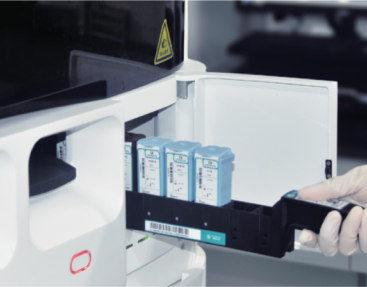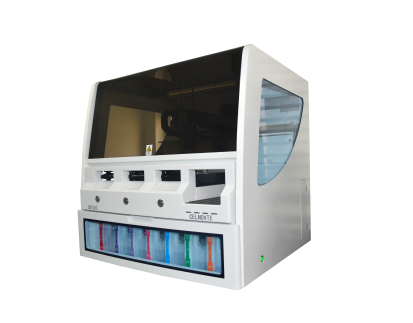Why Primary Antibody Is Crucial for Accurate Biological Analysis
 2025-09-19
2025-09-19
By admin

Understanding the Role of Primary Antibodies
What Is a Primary Antibody
A primary antibody serves as a form of immunoglobulin. It attaches directly to a chosen antigen. This antigen often includes a protein, peptide, or another biological element in a sample. It acts as the initial stage in numerous detection methods. Plus, it holds a main position in spotting and placing exact targets for review.
How Primary Antibodies Bind to Target Antigens
Primary antibodies identify and connect to distinct parts on antigens via their changing sites. This link relies on gentle forces. These involve hydrogen links, charged attractions, and weak pulls. The power and exactness of this connection prove vital. They help achieve reliable outcomes in later steps.
The Importance of Specificity and Affinity
Strong exactness guarantees the primary antibody links solely to its planned target. It avoids reactions with unrelated items. Affinity points to the firmness of the bond between the antibody and antigen. Both traits remain necessary. They cut down extra signals and boost clear results.
Presently, antibodies find broad use in diverse inquiries. These cover target spotting and medicine creation. Gaining antibodies with sharp detection and firm exactness stands as the core for fruitful work.
Applications in Biological Research
Use in Immunohistochemistry (IHC)
In IHC, primary antibodies help find certain antigens inside tissue pieces. They allow viewing of protein display patterns. Also, they show placement and amounts in cell settings. Celnovte holds a full answer for immunohistochemistry. It controls the main creation skills in this area. It supplies over 460 primary antibodies tuned for this use.
Role in Western Blotting and ELISA
In Western blotting, primary antibodies attach to proteins split by electric flow on covers. This permits their recognition after the second antibody marking. In ELISA tests, they aid in measuring antigen levels with a keen sense.
Importance in Diagnostic and Therapeutic Fields
Primary antibodies form a key part of checkup exams. Examples include cancer sign spotting, like ER, PR, and HER2. They also help in immune disorder checks. For healing, they build the base for focused cures. These involve single-type antibody treatments.
Why Accuracy Depends on Primary Antibodies
Impact on Signal Strength and Clarity
Reliable spotting leans much on how a primary antibody connects to its target. It must avoid links with the wrong items. Firm binding lifts signal power. At the same time, it lowers missed findings.
Avoiding Cross-Reactivity and Background Noise
Wrong reactions may cause confusing outcomes. They happen by attaching to unplanned targets. Employing well-checked primary antibodies aids in dodging extra marks or wrong positives. It carries benefits like steady repeats and tiny differences between groups. These directly aid uniform results across varied tests.

Consequences of Low-Quality Antibodies
Using badly described or weak exactness antibodies can lead to doubtful data reading. Or, it might cause failed trials. This wastes hours, supplies, and could harm study endings. Moreover, such issues slow down progress in labs. Researchers face repeats of work. Costs rise without gains. Trust in findings drops, too. This affects wider fields like health care.
Choosing the Right Primary Antibody from Celnovte
Overview of Celnovte’s Product Line
Celnovte provides a wide range of over 460 IHC-grade primary antibodies. They suit both human and animal samples. These cover many study areas. Examples include cancer work, tissue study, brain research, and others.
Features of Celnovte Primary Antibodies
High Specificity and Batch-to-Batch Consistency
Due to its hybridoma cell fusion technology platform, it gains cell lines that make single-type antibodies. These secrete top-standard items. Celnovte assures better exactness with little change between lots. This factor proves critical in ongoing inquiries.
Validated for Multiple Applications (IHC, WB, IF)
Each antibody goes through full check routines across various setups. These include immunohistochemistry (IHC), Western blotting (WB), and immunofluorescence (IF). This confirms wide fit with usual lab flows.
Optimized for Human and Animal Tissues
Celnovte’s items get built using effective animal cell display systems. These raise output while keeping part loyalty across types. This covers human examples plus common test beings like mouse or rat samples. Such a design aids cross-study use. It supports varied projects smoothly. Reliability stays high in different settings.
Integration with Celnovte’s Immunochemistry Solutions
Compatibility with Celnovte Automated Stainers
Celnovte’s full automatic IHC stainers are made for easy blend with its primary antibody range. This gives users top-marking outcomes. Labs cut hand errors this way. At the same time, they increase work speed.

Seamless Workflow from Staining to Imaging
Workers gain from a complete path. It runs from agent use through marking rounds. This assures steady repeats without harming picture sharpness or detail in review stages.
Time-Saving Benefits in Lab Operations
Automatic setups matched with tuned agents sharply cut active time per piece. They also grow group handling ability. This fits well for health labs dealing with large sample amounts each day.
Pairing with Celnovte Detection Kits for Best Results
When paired with Celnovte’s own second spotting sets and self-made second antibody spotting systems, workers reach boosted signal growth. Yet, they keep low extra levels. This leads to clearer pictures and steadier measurement values. Such pairings enhance overall efficiency. Labs see better data quality. Errors drop noticeably. Time for analysis shortens, too.
Best Practices for Using Primary Antibodies
Proper Dilution and Incubation Protocols
Always stick to maker-suggested mix rates based on use kind. Too much density might raise extra noise. On the flip side, too little can dim signal power. Rest times need tuning per sample type or test state.
Storage Conditions to Maintain Stability
Keep primary antibodies at the advised temperatures. These often include -20°C or 4°C based on the mix. Stay away from light or repeated cold-melt rounds. These could weaken function over periods.
Troubleshooting Common Experimental Issues
If encountering weak signals or unexpected bands/stains:
- Verify antigen presence via positive control
- Adjust blocking buffers
- Optimize washing steps
- Confirm antibody integrity if stored long-term
Consult technical support when necessary for customized troubleshooting advice specific to your protocol setup.
How Celnovte Supports Researchers and Labs
Technical Support and Protocol Guidance
Celnovte offers skilled advice services. These cover test plan suggestions, fix aid, and flow tuning hints. All aim to assist workers in achieving steady outcomes fast.
Customization Services Based on Research Needs
For tasks needing special targets or uncommon type reactions, Celnovte owns a skilled antibody creation group. It backs tailored building services for mouse single-type antibodies and human single-type antibodies. This lets labs reach made-to-fit answers matched exactly with their study goals via our tailored service options.
FAQ
Q: What makes a good primary antibody?
A: A good primary antibody must hold strong exactness toward its target antigen. It needs firm binding traits. Low wrong reactions with other proteins matter too. Checked function across various uses, like IHC or WB counts. Steady group-to-group quality rules stand key.
Q: Can I use one primary antibody across different applications?
A: Yes—but solely if checked that way. Many Celnovte primary antibodies are tested over IHC, WB, and IF setups. This assures dependable cross-setup function when flows get followed right.
Q: How do I store my primary antibody correctly?
A: Keep at -20°C unless the maker says otherwise. Dodge repeated cold-melt rounds. Splitting into smaller amounts gets advised if regular use comes up over time.
RELATED PRODUCTS






